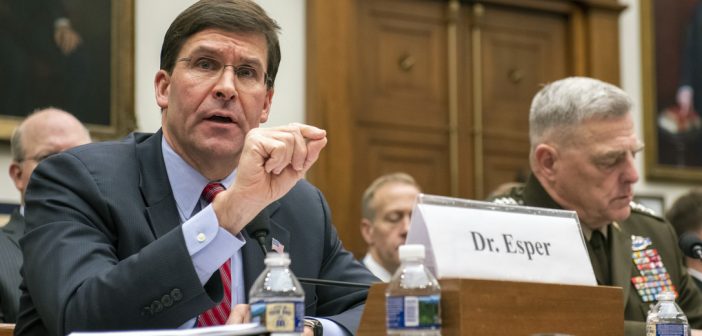Pentagon Must Make Tradeoffs Before Falling Budgets Force Haphazard Cuts
In a few short weeks the coronavirus pandemic has killed nearly 30,000 Americans and already cost nearly as much as the Iraq and Afghanistan wars combined.
The financial impact will be even greater when you consider that additional stimulus packages will be needed and tax revenues will also drop dramatically.
Washington was already running a $1 trillion deficit before the virus. Congress authorized $2.2 trillion in stimulus and economists estimate that tax revenues may be down by as much $1 trillion over the coming fiscal year.
That’s potentially a $4 trillion increase to a national debt that late last year stood at a record $23 trillion. We managed to accumulate that debt despite an economy that experienced one of the longest bull runs in American history.
And stimulus costs are likely to keep growing as the crisis continues and unemployment continues to rise and persist for what could be a global depression.
Adding to the costs will be resources for state and local governments that also are groaning under debt, rising costs and falling revenue, constituting another challenge that will drive cuts in public services and workers. A debt default at the state level could trigger a wider financial crisis, a scenario that has long worried deficit hawks and savvy investors.
In the meantime, the solution appears to be to print more money.
All of which is to say that the US defense budget is unlikely to remain static, but face sharp downward pressure.
Whether defense spending should go up is immaterial. Yes, there is bipartisan support for continued defense investment as the United States steps up to counter rapidly improving Chinese and Russian capabilities.
The fiscal gravity, however, is inescapable. Defense spending will be cut, and likely cut more sharply than most expect. And further eating into available buying power will be the demand to invest in the military medical system to better prepare it for future pandemics.
Defense Secretary Mark Esper deserves credit for working to make tradeoffs knowing that even in good times his funding was going to be flat.
The era of nips and tucks, however, are over.
The Pentagon leadership must now consider hard choices that they have long been forestalling.
The framing question must be — what are the capabilities that will be vital to effectively deter a rival great power and if necessary, beat them?
Gen. David Berger, the Marine Corps commandant, should serve as a guide. His new strategy makes hard choices to address an adversary that has posed difficult problems for his force.
As Berger and his team have concluded, a China with increasingly precise long-range strike and area-denial weapons must drive a more agile, distributed force able to unleashing superior long-range firepower.
Washington no longer has the luxury of unnecessary duplication of capabilities, programs of incremental value, systems that are vulnerable or cause more logistical headaches than they solve.
The reassessment of America’s legacy platforms, concepts of operations and assumptions must be clinical, empirical and unsentimental.
Anything that poses novel and costly problems for our adversaries, holds their forces at risk, heightens their uncertainty or complicates every element of their planning deserves to be prioritized. Anything that doesn’t should be sacrificed to free resources for what will.




